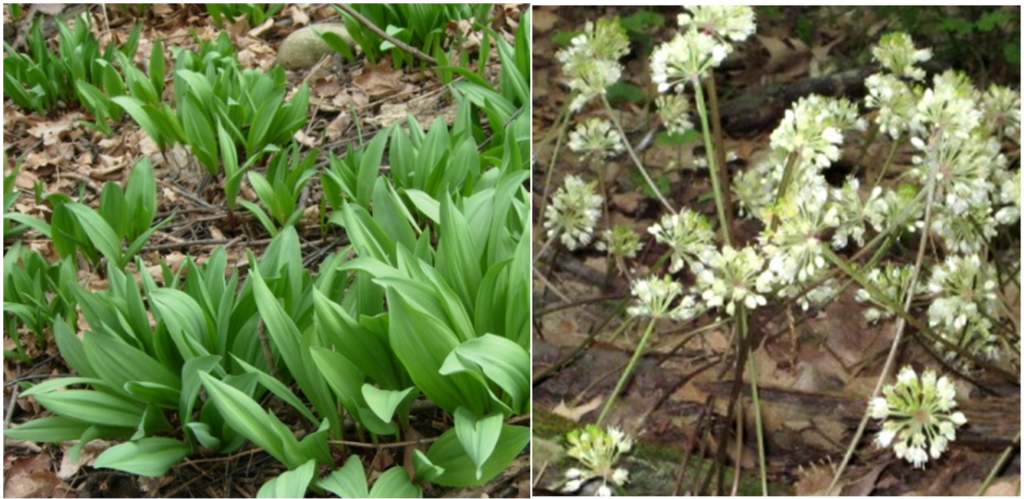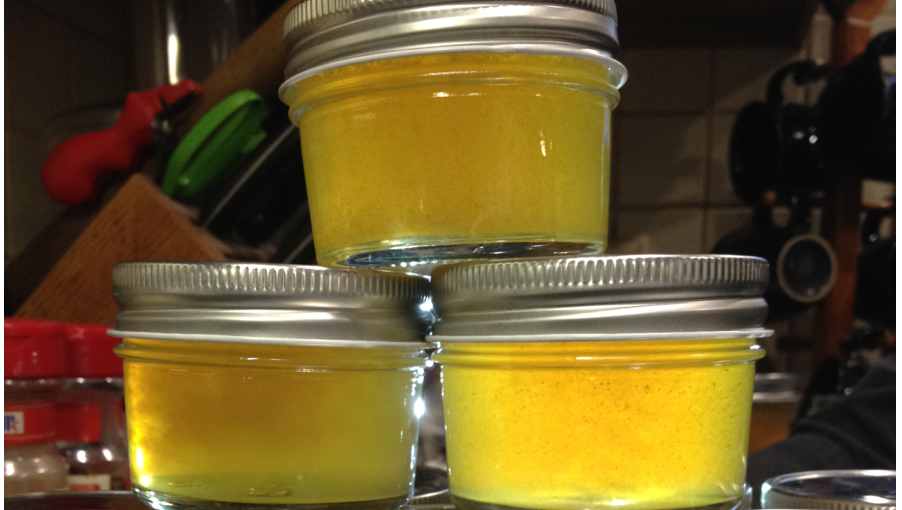From early to mid June, my neck of the woods in Upstate New York is awash in wild roses. They smell lovely, especially first thing in the morning on a sunny day. It almost makes up for how much I hate the multifloras the rest of the year.
The Northeast United States is home to six native species of rose: Pasture/Carolina rose, Virginia rose, swamp rose, meadow/smooth rose, shining rose, and bristly/prickly rose. Some of these have cross-bred, resulting in Gilman’s rose, hybrid swamp rose, Haines’ rose, and the New England rose. Climbing rose and prairie rose are thought to have been introduced here from other parts of the Americas. Rugosa roses and multiflora roses, which proliferate in the area, are not native, having been brought here from Asia.
Wild roses differ from their cultivated cousins in that wild roses have only 5 petals, whereas cultivated roses have many whorls of petals. With the exception of multiflora roses, they all have pink flowers with a single row of petals and are generally petite, usually reaching around 3 feet tall. Multiflora and rugosa roses can grow considerably taller, with multiflora roses often climbing up into the surrounding trees. Many of the wild pink roses are hard to classify, as the differences between species can be difficult to identify. Multiflora roses, however, are readily identifiable as they primarily bloom white.
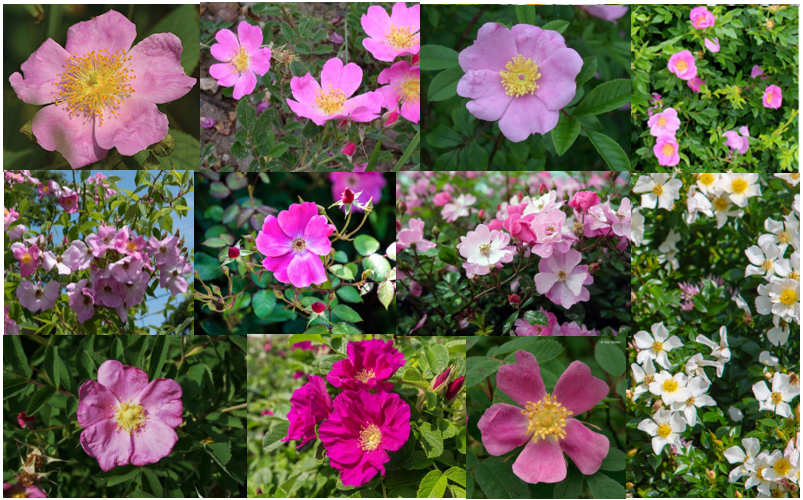
Species of Wild Roses
Pasture/Carolina rose: A plant of short stature, not exceeding three feet in height, that expands into a dense bush with upright stems and few branches. This rose grows in average to wet soils and is salt and drought tolerant, preferring Full sun to part shade.
Virginia rose: Similar to the Carolina rose in foliage, distribution, and growth habit, this rose is short and shrubby and also grows no more than three feet tall. (The leaf stipules, small appendages at the base of the leaf stalk, are the traditional way to tell them apart; in the Virginia rose they flare at the upper end.) It grows in sandy and even saline and prefers full sun to part shade.
Swamp rose: Tall and graceful, growing to five to seven feet high, this rose can grow in almost any soil type, including sandy soils and wet-to-soggy soils, occasionally even growing in slightly submerged areas on the edges of ponds and streams. You will find it in full sun areas.
Meadow/smooth rose: Nearly thornless, the upper stems and the new growth are smooth. Any thorns that occur are bristly prickles at the base of the older stems. Broad–rounded to arching–mounded, it can spread to form dense patches 3’ to 5’ tall. It prefers dry soil of clay, sand, or loam, in full or partial sun.
Shining Rose: This rose is a dwarf, suckering shrub with reddish stems densely covered in fine prickers. Growing 2’ – 3’ tall, it can form dense colonies through rhizomatic spread. Foliage is shiny pinnate leaves terminating in 5 to 7 slender leafets. It prefers moist to wet soil in full sun or partial shade, often appearing in bogs, swamps, and wet thickets.
Bristly/prickly rose: While widespread in many parts of North America, this hardy rose is relatively rare in the northeast, found in small areas of Maine, Massachusetts, New Hampshire, and Vermont. It grows as an upright shrub 3’ to 7’ tall, preferring full to partial sun on rocky cliffs and ledges. If you’re lucky enough to find this rare rose, take some pictures and then leave it alone.
Climbing rose: The only native climbing rose, this also has a distinctive leaf that bears three leaflets, as opposed to five to seven in other species. It can climb up to 12 feet high and tolerates a wide range of soils and average to wet conditions, preferring full to partial sun.
Prairie rose: The state flower of North Dakota, this dwarf rose grows between 10” and 18” tall, with stems covered in dense prickles. It is incredibly drought resistant, and prefers prairies, grasslands, roadsides, and field edges.
Rugosa rose: This import from Asia, also frequently known as beach rose, has tough leathery leaves. It forms dense thickets of spiny, bristly canes 4’ to 6’ tall, with masses of dark pink flowers in mid-summer. It prefers disturbed habitats, sea beaches, and dunes, though will grow anywhere that isn’t actively wet.
Multiflora rose: This rose is extremely invasive and has been classified as a noxious weed in several states. It is a climbing, rambling shrub that can grow 15’ tall or more, happily climbing fences and trees. It is shade tolerant but frequently invades sunny places such as farm pastures, field borders, and open roadsides. The flowers are small and fragrant, most often white but occasionally light pink.
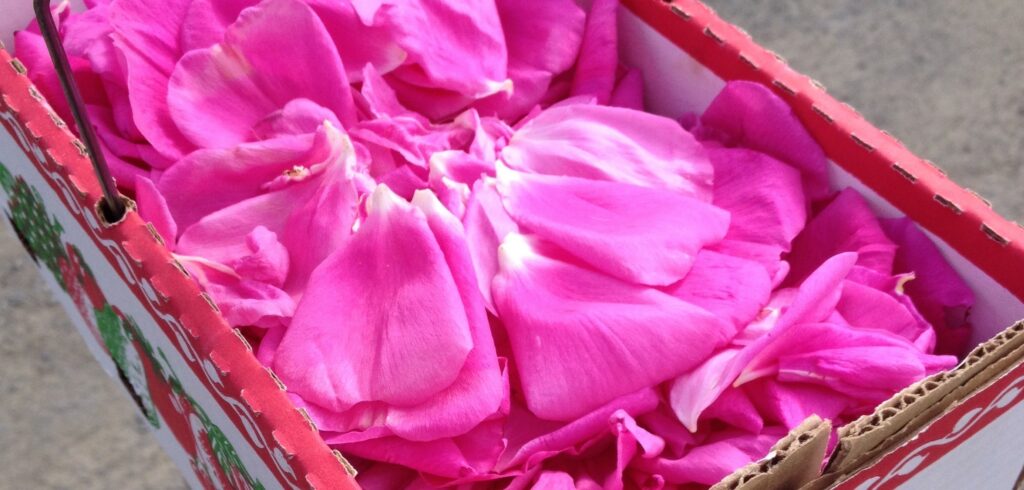
Wild, chemical-free rose petals of all types can be used to make both rose jelly and rose jam. I have a hard time finding native pink roses here, so I go with the invasives. I personally prefer to harvest rugosa roses, because (1) there is a huge patch nearby, and (2) the petals are large and have a deep color. However, there is no reason you can’t use multiflora petals, as long as you’re prepared to be plucking them for awhile. Adding a few pink petals, if you can find them, will give your multiflora rose preserves a more appealing color.
As usual, you’ll get better flavor if you harvest early in the day, preferably not after a significant rainfall. Be prepared to compete with honeybees for your haul — if you are reactive to bees, get someone else to harvest for you! You need only pluck the petals, not the stamens, and aim for ones that aren’t bruised or browning. Rinse them gently, examine for bugs, and then either pop them in the freezer to deal with later, or start making some yummies!
Rose Petal Jelly
Combine 2 cups *packed* flower petals with 3 ¾ cups of boiling water and ¼ cup of lemon juice, or with 1 tsp of food-grade citric acid and an extra 1/4 cup of boiling water. Allow that infusion to ‘brew’ for 24 hours. Pour the mixture through a jelly bag or multiple layers of cheesecloth to strain out the flowers.
- 4 cups infusion
- 2 cups sugar
- 1/3 cup low sugar pectin (Sure-Jell and Ball both make a low-sugar pectin, and several companies sell it in bulk online.)
Be prepared for the jelly to take longer at a boil than you’re used to before it starts to gel. If it gets truly ridiculous you can add a little more pectin, but remember to recheck the pH if you do so. I usually get 10 four-ounce jars, plus or minus one.
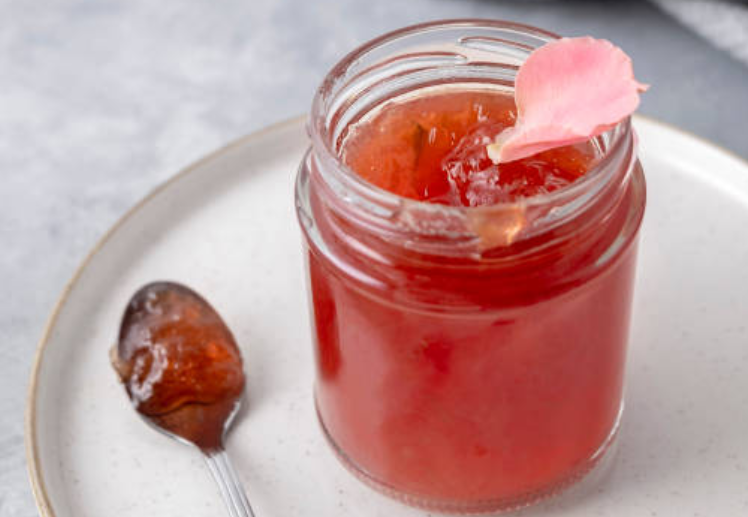
Rose Petal Jam
- 2 cups of *packed* rose petals
- 1 1/2 cups water
- 1/2 cup lemon juice (or 2 tsp of food-grade citric acid and another 1/2 cup of water)
- 2 cups sugar
- 1/3 cup low sugar pectin
Put the rose petals and water into a blender or food processor and mix until the petal bits are the size you desire. If you want whole petals in your jam, skip this step. Add the lemon juice or citric acid, and then proceed as usual with your jam making process. Yield is 10 four-ounce jars, plus or minus one.
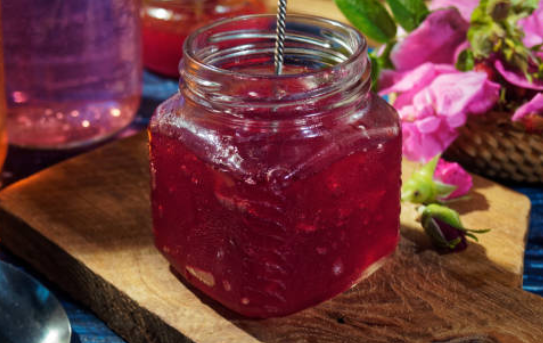
I’ve said this elsewhere but I’m gonna say it again: The lemon juice/citric acid is in there because for safe canning, the end product of flowers + pectin + sugar must have a pH lower than 4.6.
This is non-negotiable. I strongly advise flower jam and jelly makers to buy an inexpensive pH meter with automatic temperature compensation to test each batch before canning. If the pH is too high, add lemon juice or food-grade citric acid until an appropriate pH is reached. Seriously, you don’t want to poison your friends and family.
Happy harvesting!


